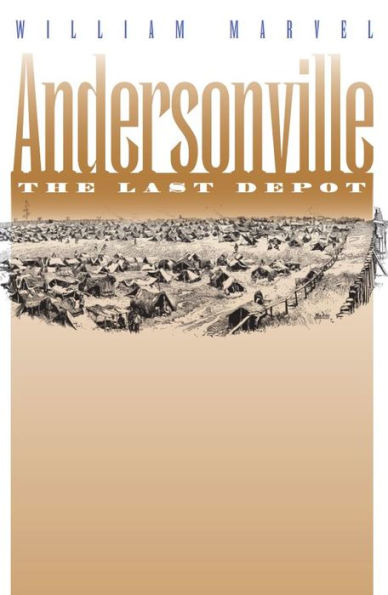Between February 1864 and April 1865, 41,000 Union prisoners of war were taken to the stockade at Anderson Station, Georgia, where nearly 13,000 of them died. Most contemporary accounts placed the blame for the tragedy squarely on the shoulders of the Confederates who administered the prison or on a conspiracy of higher-ranking officials. According to William Marvel, virulent disease and severe shortages of vegetables, medical supplies, and other necessities combined to create a crisis beyond the captors' control. He also argues that the tragedy was aggravated by the Union decision to suspend prisoner exchanges, which meant that many men who might have returned home were instead left to sicken and die in captivity.
"1111440855"
Andersonville: The Last Depot
Between February 1864 and April 1865, 41,000 Union prisoners of war were taken to the stockade at Anderson Station, Georgia, where nearly 13,000 of them died. Most contemporary accounts placed the blame for the tragedy squarely on the shoulders of the Confederates who administered the prison or on a conspiracy of higher-ranking officials. According to William Marvel, virulent disease and severe shortages of vegetables, medical supplies, and other necessities combined to create a crisis beyond the captors' control. He also argues that the tragedy was aggravated by the Union decision to suspend prisoner exchanges, which meant that many men who might have returned home were instead left to sicken and die in captivity.
14.99
In Stock
5
1

Andersonville: The Last Depot
350
Andersonville: The Last Depot
350eBook
$14.99
$19.99
Save 25%
Current price is $14.99, Original price is $19.99. You Save 25%.
Related collections and offers
14.99
In Stock

Product Details
| ISBN-13: | 9780807866917 |
|---|---|
| Publisher: | The University of North Carolina Press |
| Publication date: | 11/09/2000 |
| Series: | Civil War America |
| Sold by: | Barnes & Noble |
| Format: | eBook |
| Pages: | 350 |
| Lexile: | 1560L (what's this?) |
| File size: | 9 MB |
About the Author
What People are Saying About This
From the B&N Reads Blog
